The most prominent feature of the peninsula is desert, but in the southwest there are mountain ranges, which receive greater rainfall than the rest of the Arabian Peninsula.
Archaeology has revealed the existence of many civilizations in pre-Islamic Arabia ), especially in South Arabia (Arabia Felix). These civilizations include Sheba, Himyarite Kingdom, Kingdom of Awsan, Kingdom of Ma'īn and Sabaean Kingdom.
To the north, Arabia Petraea was bordered on the north by Syria, on the west by Iudaea and Egypt. Arabia Petraea was made into a Roman province in 106 AD.
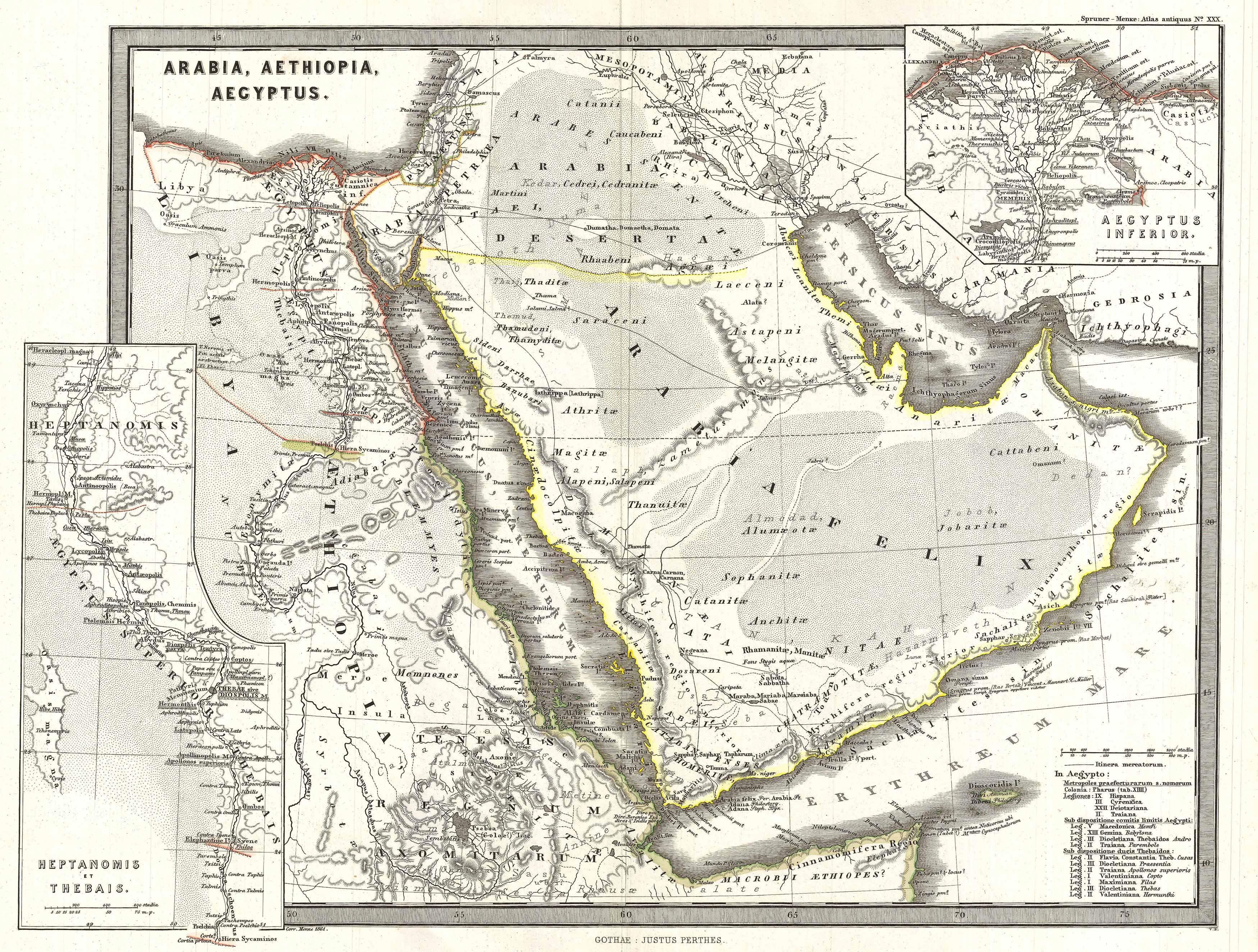
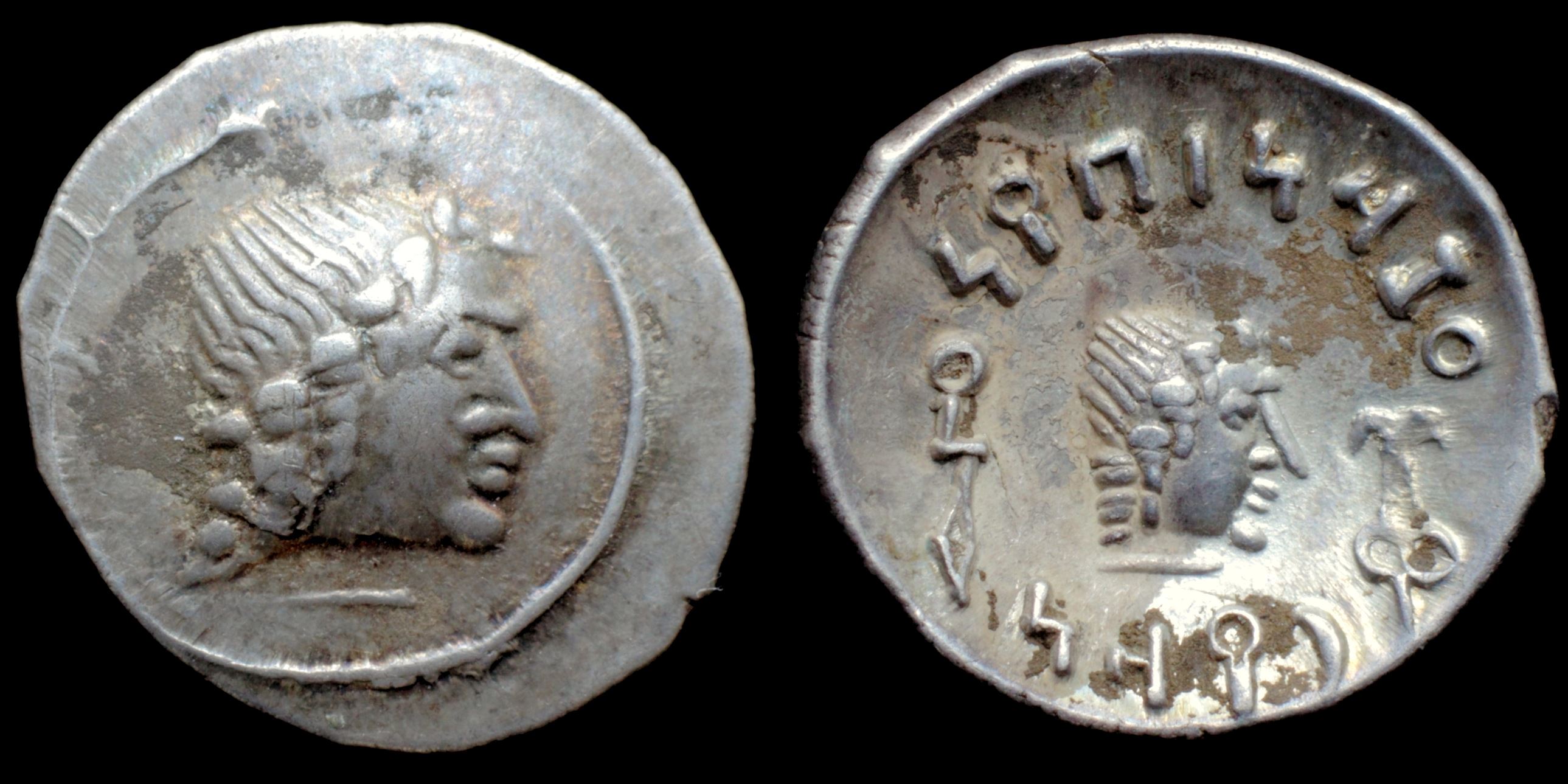
Reverse: 'MDNIBYNI around, RYDN in exergue, small head right; sceptre symbol before
Die Orientation: -
Weight: 1.2 g
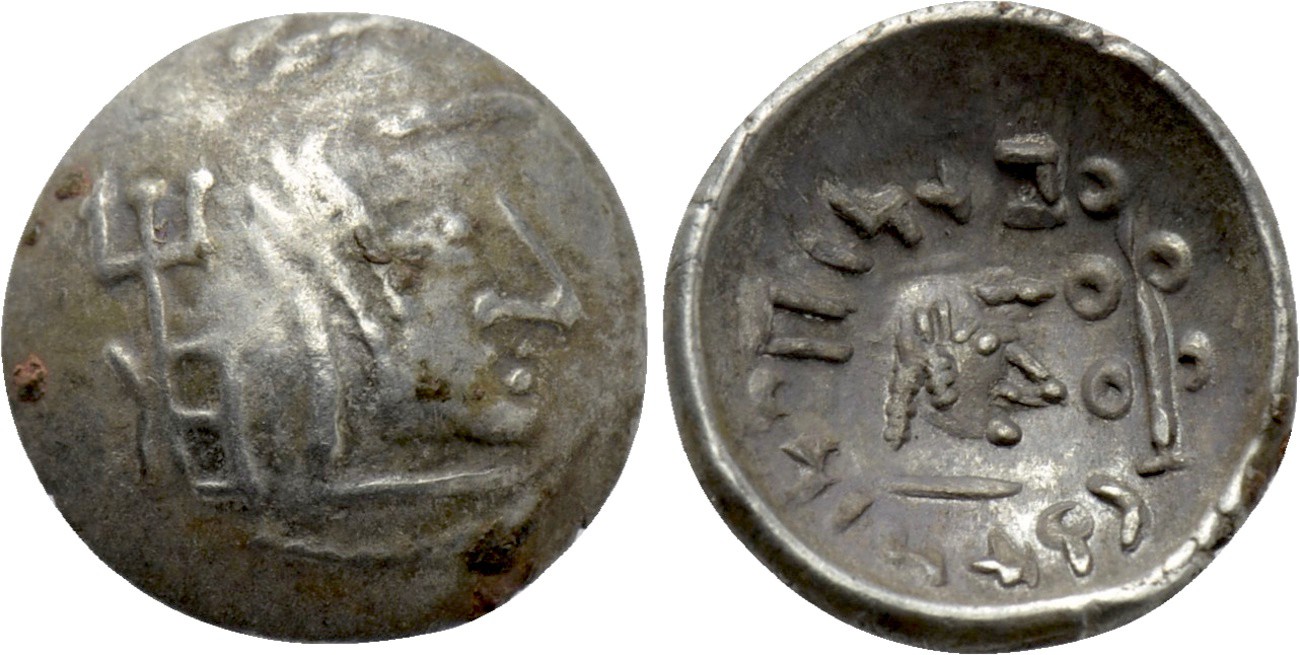
Reverse: Small head right; ‘sceptre’ to right.
Die Orientation: -
Weight: 0.93 g
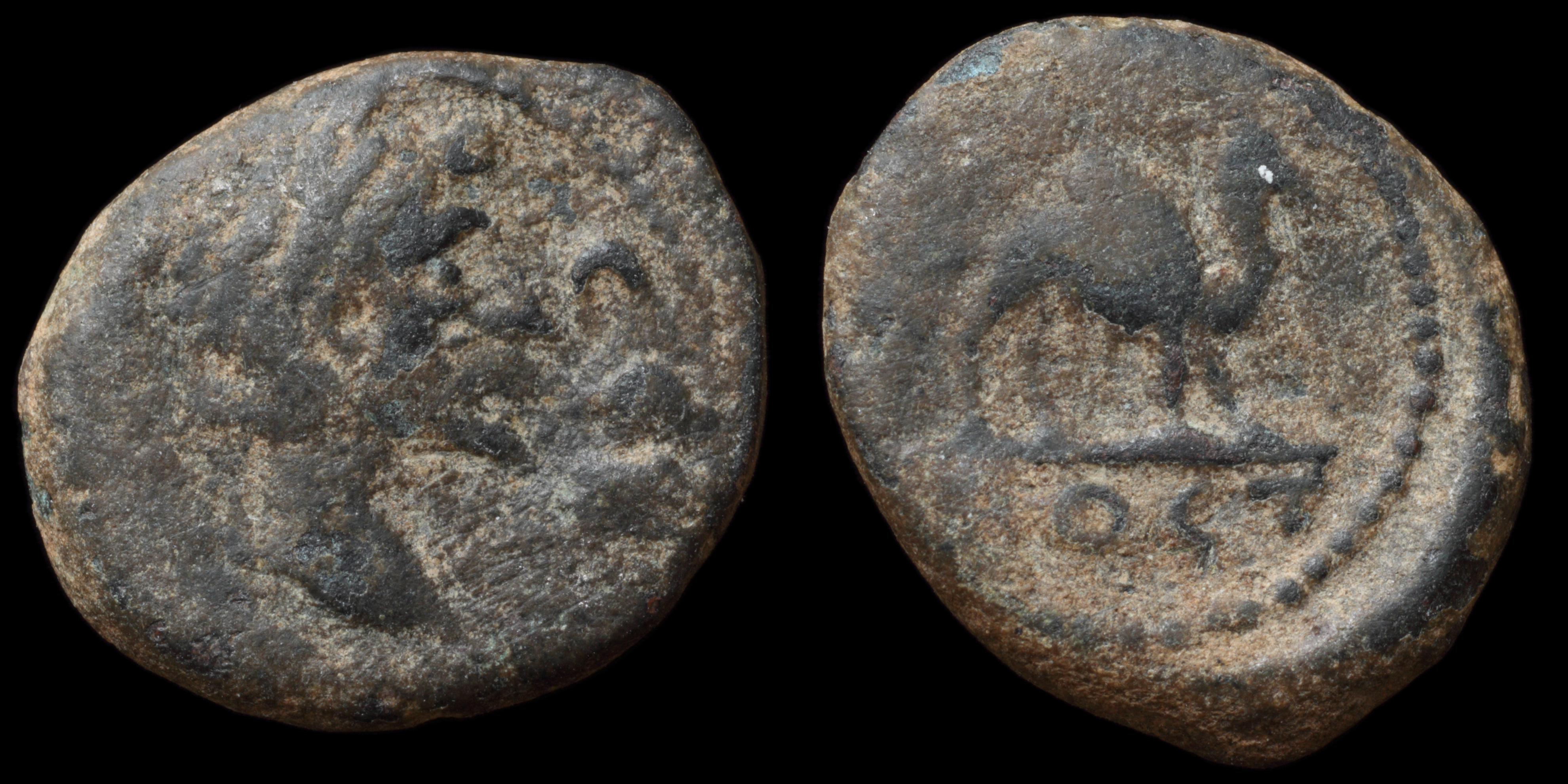
Reverse: camel right; BOCT
Die Orientation: -
Weight: 5.2 g
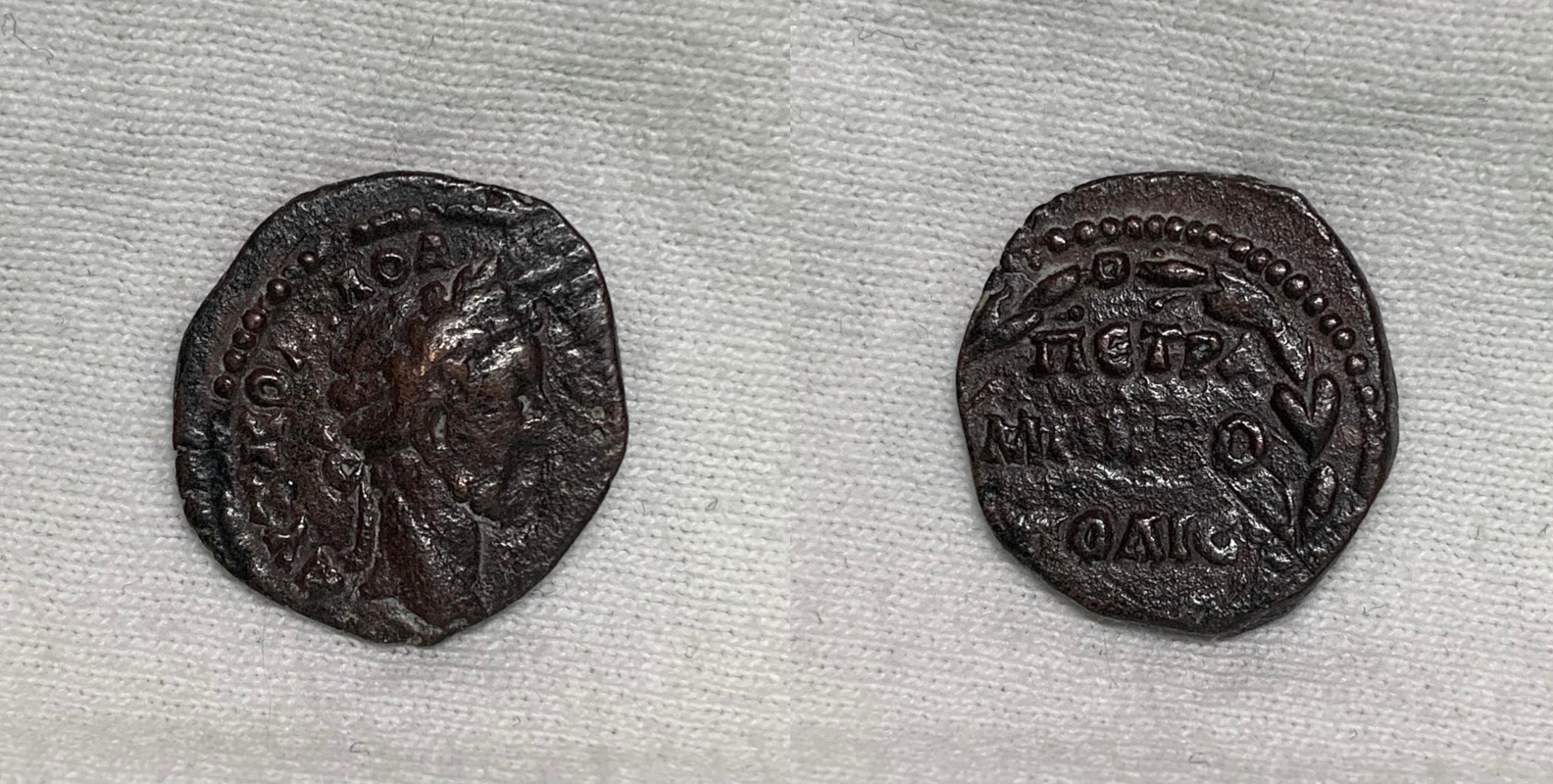
Reverse: ΠƐΤΡΑ ΜΗΤΡΟΠΟΛΙϹ: in laurel wreath
Die Orientation: 6 H
Weight: 2.1 g
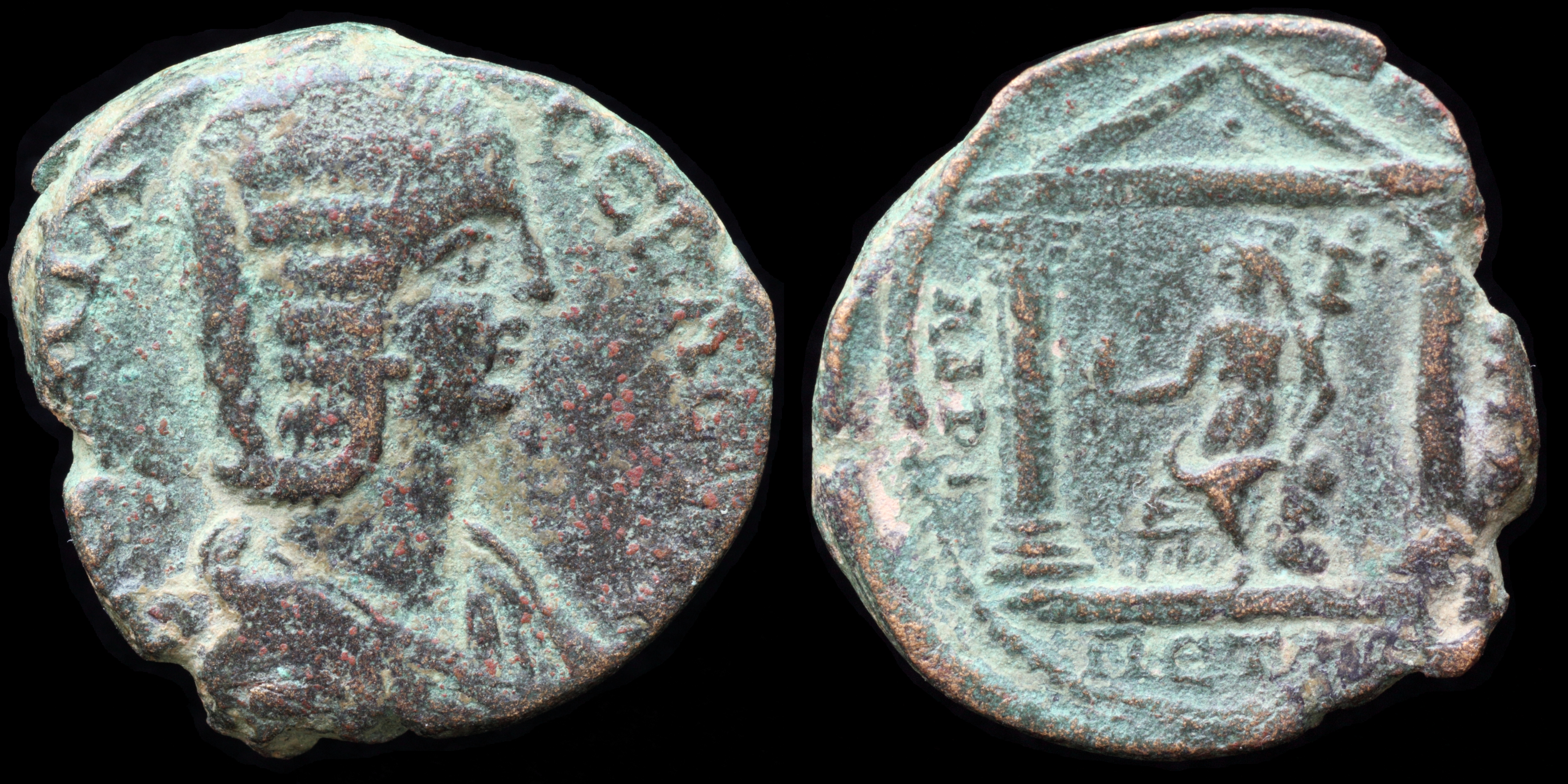
Reverse: Tyche of Petra, holding baetyl and trophy, seated left on rock outcropping within distyle temple; pellet in pediment; AΔΡI_ΠETΡA_MHT
Die Orientation: -
Weight: 12.47 g
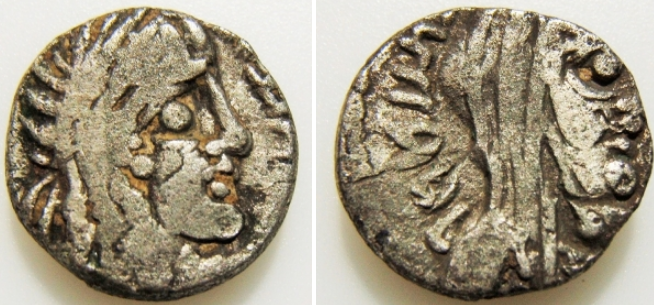
Reverse: Laureate, veiled, and draped bust of Gamilat right; date in legend behind head.
Die Orientation: 11 H
Weight: 3.12 g
.png)
Reverse: Laureate, veiled, and draped bust of Gamilat right; date in legend behind head.
Die Orientation: 11 H
Weight: 3.12 g
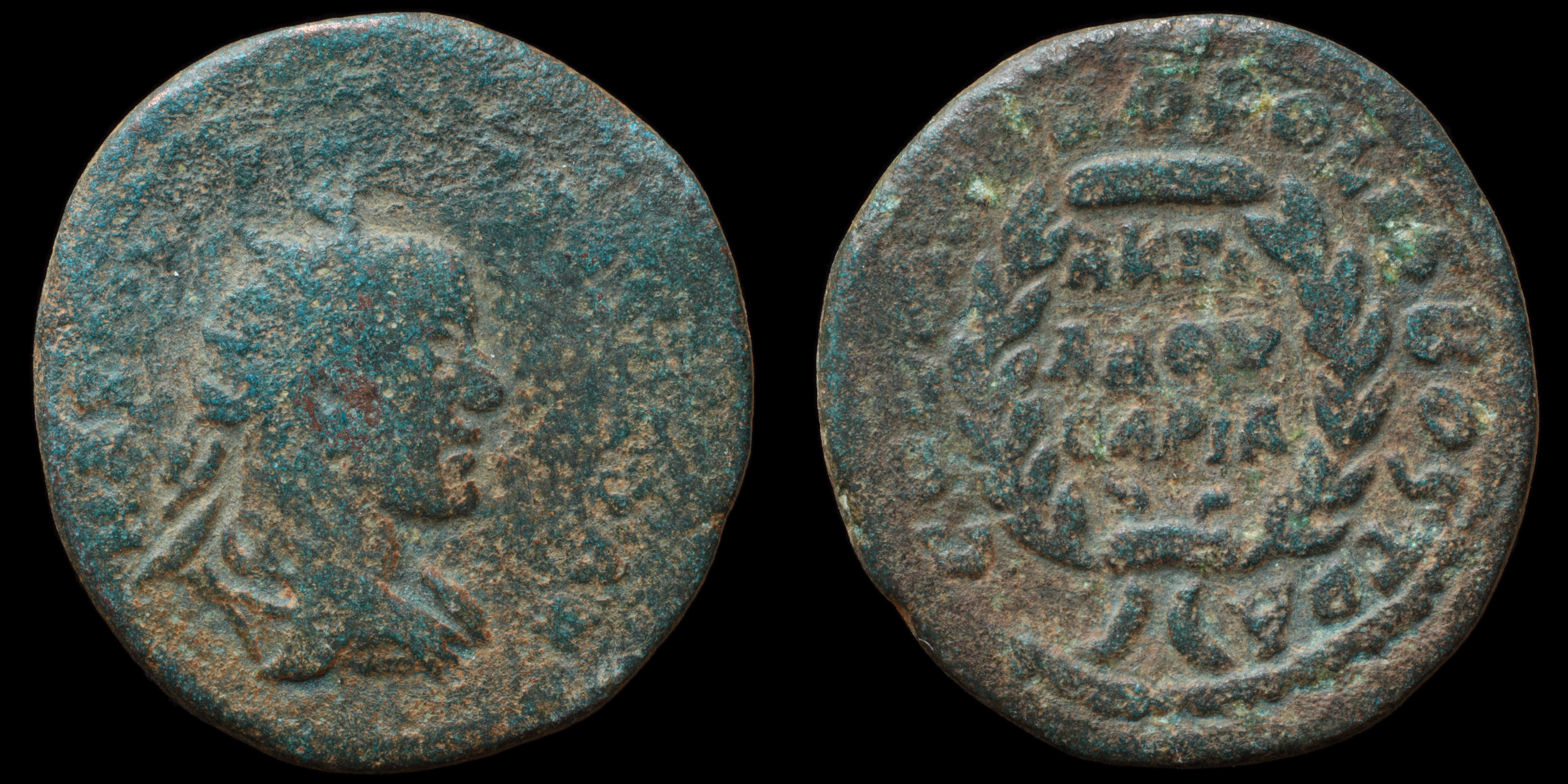
Reverse: wreath; COL METROPOLIS BOSTRA AKTI / A ΔOV / CAPIA
Die Orientation: -
Weight: 14.7 g
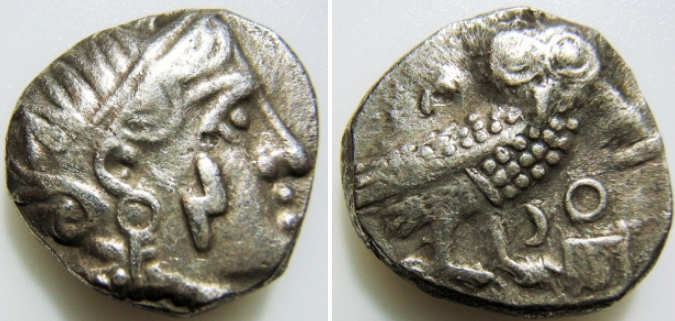
Reverse: AΘE - Owl standing right, head facing; olive sprig and crescent behind, crescent below, AΘE right.
Die Orientation: 6 H
Weight: 4.86 g
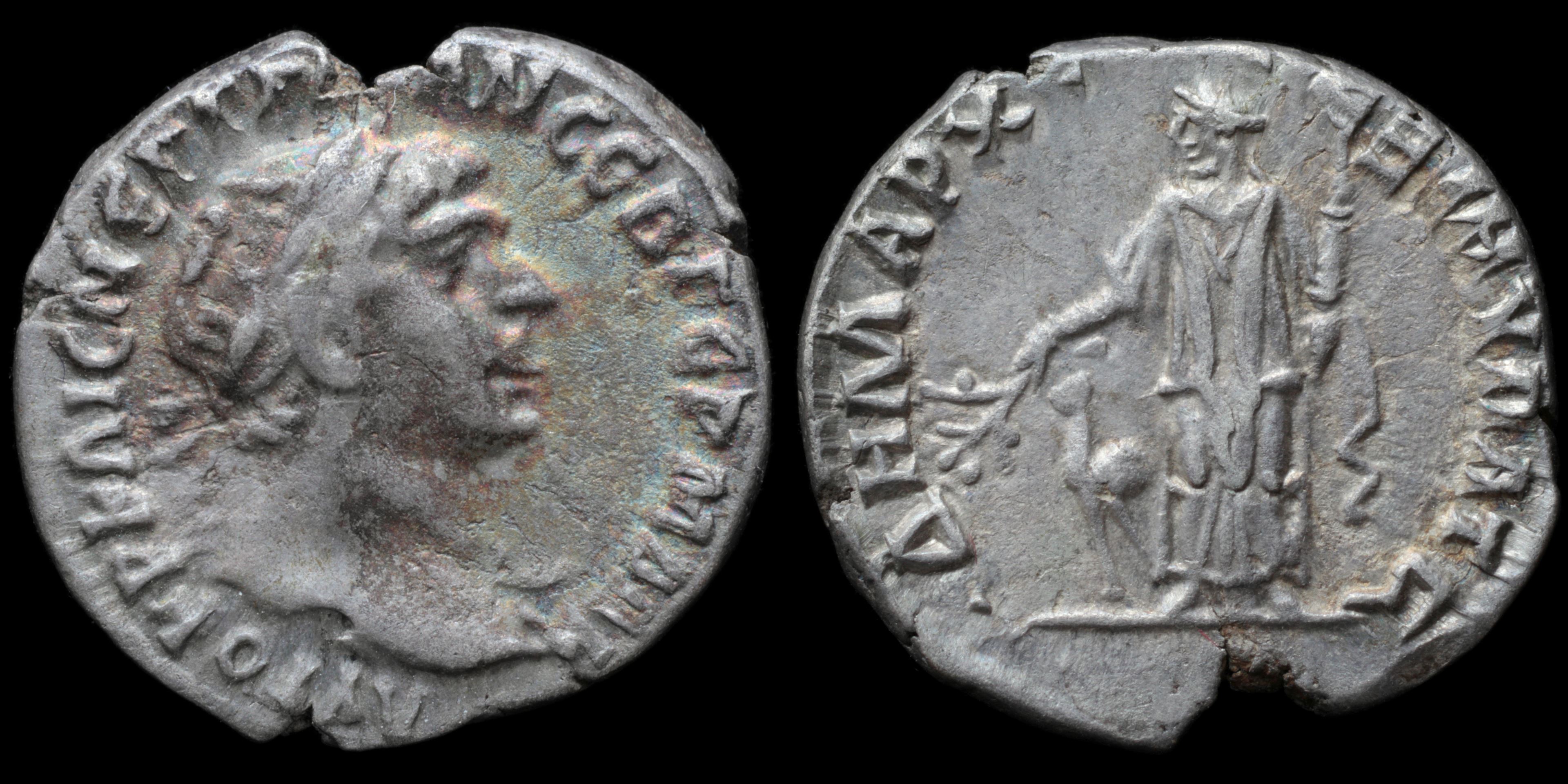
Reverse: Arabia facing, holding branch and cinnamon sticks, camel halfleft; ∆HMAPX__EΞ IϚ YΠAT Ϛ
Die Orientation: -
Weight: 3.4 g
_3(1).jpg)
Reverse: ΔHMAPX ЄΞ YΠATO ς, camel walking left
Die Orientation: 6 H
Weight: 2.78 g
